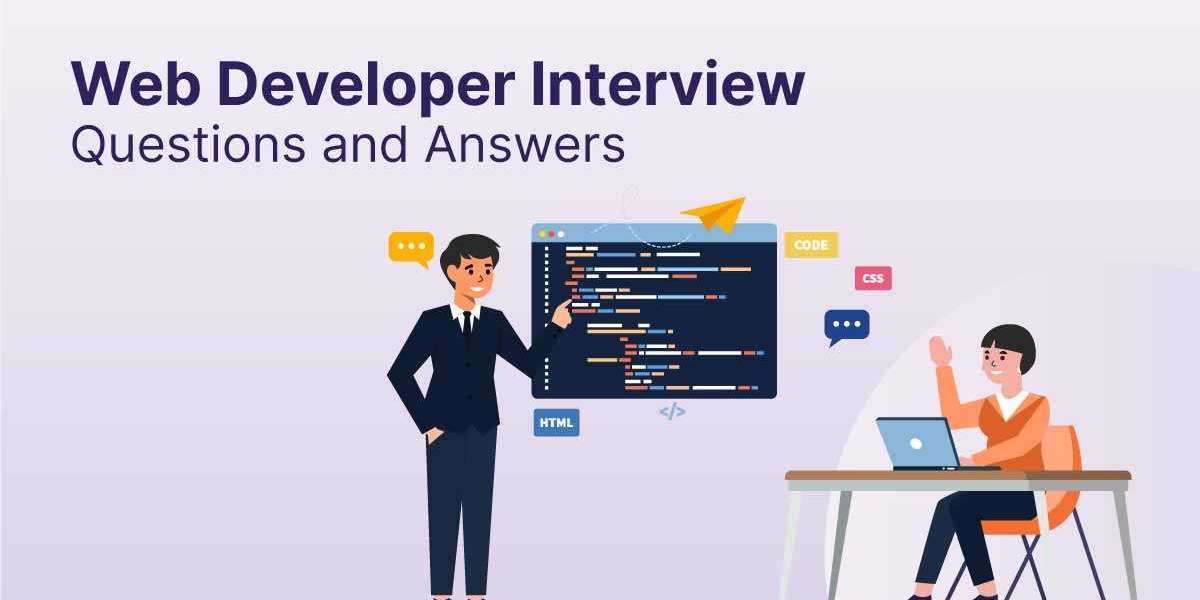HTML is the foundation of every web application, and mastering it is essential for any aspiring or experienced web developer. If you are preparing for a technical interview, going through HTML interview questions and answers can help you stand out from the competition. While most candidates focus on the basics, employers often assess your knowledge of advanced HTML concepts to determine your depth of expertise.
In this guide, we’ll explore advanced HTML interview questions and answers that can help you excel in your next web development role.
1. What is the Difference Between em and strong Tags?
Answer: Both em and strong are semantic HTML tags. The em tag is used to emphasize text, typically displayed in italics, and it conveys importance through pronunciation or stress in speech. The strong tag indicates strong importance, usually displayed in bold. The difference is more about semantic meaning than visual styling, as screen readers interpret them differently.
2. Can You Explain the Concept of Semantic HTML and Its Benefits?
Answer: Semantic HTML uses tags that have meaningful names, such as header, article, and footer, to describe the content's role. This improves accessibility for screen readers, enhances SEO, and makes code more maintainable. Understanding semantic HTML is a common topic in HTML interview questions and answers because it reflects your ability to write clean and accessible code.
3. What Is the Difference Between inline, block, and inline-block Elements?
Answer:
Inline elements (e.g.,
span,a) flow within text and do not start on a new line.Block elements (e.g.,
div,p) start on a new line and occupy the full width available.Inline-block elements combine features of both — they respect inline positioning but allow setting width and height.
4. How Does the picture Element Differ from the img Tag?
Answer: The picture element allows developers to define multiple image sources for responsive design. It can serve different image formats or resolutions depending on device characteristics. The img tag, on the other hand, can only display a single image source. This is often included in HTML interview questions and answers to test your responsive design skills.
5. What Are Data Attributes in HTML and How Do You Use Them?
Answer: Data attributes (e.g., data-user-id="123") allow you to store extra information in HTML elements without affecting their rendering. These values can be accessed in JavaScript using element.dataset. They are useful for dynamic content handling without adding hidden inputs.
6. How Do You Ensure Accessibility in HTML?
Answer: Accessibility in HTML involves using semantic elements, proper heading hierarchy, alt attributes for images, ARIA roles, and labels for form inputs. Ensuring accessibility is crucial because it makes your website usable for people with disabilities and improves SEO. This is a key topic in advanced HTML interview questions and answers.
7. Can You Explain the Difference Between script, noscript, and template?
Answer:
scriptis used to embed or reference JavaScript.noscriptprovides fallback content if scripts are disabled.templatestores HTML code that isn’t rendered immediately but can be cloned and inserted dynamically via JavaScript.
8. What Are Some Deprecated HTML Tags You Should Avoid?
Answer: Examples include font, center, big, and acronym. These have been replaced by CSS for styling and modern semantic elements for meaning.
Final Thoughts
Preparing for a developer interview requires more than just knowing the basics. By practicing advanced HTML interview questions and answers, you can demonstrate not only your technical knowledge but also your understanding of best practices in web development. Employers value candidates who can write clean, semantic, and accessible HTML that enhances both user experience and SEO.
If you’re serious about landing your next web developer role, master these questions, build projects that showcase these skills, and keep up with the latest HTML standards.








